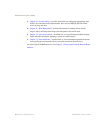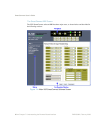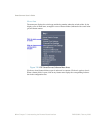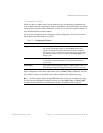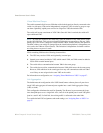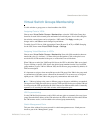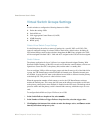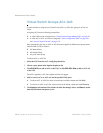
SmartConnect User’s Guide
96
Chapter 8: Virtual Switch Groups BMD00082, February 2009
Virtual Machine Groups
The switch automatically discovers VMs that reside in the hypervisor directly connected to the
switch. As with ports, VMs can be independently assigned to VSGs in order to group or sepa-
rate them. Optionally, uplink ports can also be assigned to VSGs that include VMs.
The switch will accept a maximum of 1024 VMs. Once this limit is reached, the switch will
reject additional VMs.
Note – In some rare situations, the switch may reject the addition of new VMs prior to reach-
ing the 1024 VM limit. This can occur when the hash bucket corresponding to the new VM is
already full. If this occurs, change the virtual machine’s MAC address and retry the operation.
The MAC address can usually be changed from the virtualization platform’s management con-
sole (such as the VMware Virtual Center). This limitation is independent of whether switches
are acting alone or as part of a stack.
VSGs containing VMs have the following characteristics:
The VSG may consist of VMs and (optionally) external port.
Internal ports cannot be added to VSGs which contain VMs, and VMs cannot be added to
VSGs which contain internal ports.
The switch allows communication between VMs in the same group.
The switch does not allow communication between VMs which are not in the same group.
However, VMs which are in the same hypervisor may still communicate with each other
even if they are not assigned to the same VSG on the switch.
For information on configuration, see “Assigning Virtual Machines to VSGs” on page 97.
Link Aggregation
The default network configuration of the VSE SmartConnect software places all ports into a
single VSG, and aggregates all external ports together into a static Link Aggregation Group
(LAG, or trunk).
This configuration eliminates the need for Spanning Tree Protocol to prevent network loops,
since the uplink ports act as a single link. Also, since all of the uplink ports in each VSG partic-
ipate in a static LAG, if a link fails, the existing traffic is redirected to the other links.
To override default VSG assignments and trunk settings, see “Assigning Ports to VSGs” on
page 97.



